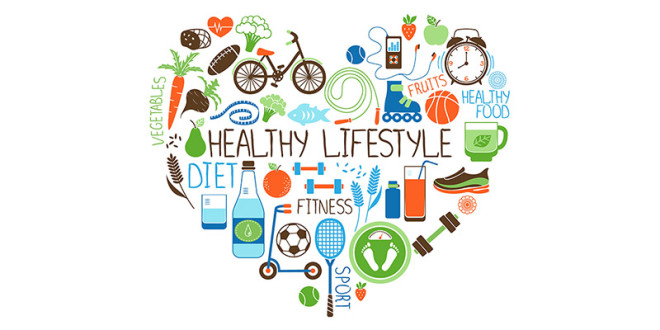by Michelle Sutton-Kerchner
It’s American Heart Month. Take these small steps to a stronger beat …

Move More. Regular exercise definitely improves heart health. However, avid exercisers can unintentionally increase their risk for heart disease, obesity, and other health concerns.
Meet government recommendations for required exercise, but continue to remain physically active throughout the rest of your day. Research shows artery-damaging fats are allowed to increase during sedentary periods. Inject regular movement into your day. Statistics show a definite correlation between hours spent sitting idle and risk of heart disease. Fitness goes beyond what you accomplish at the Center. Make your health a lifestyle.
Introduce Meatless Meals. For many, weight loss is the goal of dietary changes. The good news: Eating for heart health can have the positive “side-effect” of losing weight. Heart-healthy eating often involves the Mediterranean Diet, which focuses on fish, vegetables, and fruits.

Start by eliminating meat one day each week. On the other days, choose chicken or turkey. Avoid or reduce your consumption of red meat. When you splurge on a beef burger or steak, be sure to choose the leanest cuts. On your meatless day, use vegetables to add texture and beans to boost protein and fiber. Perhaps add chopped zucchini and beans to sauce instead of meat or sausage. This hearty approach to meatless will leave you feeling satisfied instead of deprived.
Make Fitness a Priority. Aerobic exercise elevates your heart rate, which brings numerous benefits. Keeping the heart rate elevated about 30 to 60 minutes continuously is optimal. However, cardio workouts can be broken into two 15-minutes sessions if rest is needed or time is limited. Try to make this a daily commitment.

Aerobic exercise helps decrease inflammation, lower blood pressure, and burn calories—all of which helps the heart function better. Aim to burn 2,000 calories weekly through exercise for the biggest boost to your heart. Be sure to warm up and cool down. This helps prevent injury to muscles and joints, and it protects the heart by allowing your cardiovascular system to slowly return to its normal state.
A vigorous workout also helps reduce stress, anxiety, and anger along with their toxic impact on heart health.
Get Checked. Be proactive in your health. See your physician for annual physicals. Get routine testing done according to recommendations. Follow up with diagnostic tests when needed. Take advantage of free health assessments by the Center nurse.
Know your numbers—cholesterol, triglycerides, and blood pressure. Know your genetic predispositions. Work to eliminate risky lifestyle factors like smoking and excessive alcohol consumption. Share health history with your physician. Together, you safely and effectively can work toward a healthier lifestyle.
Show the Love
Your heart is a strong, tireless structure. Take care of it every day so it will continue to take care of you, ticking to keep you alive and kicking.
Sources
“A Month to Change Your Heart: Day 5” by David Becker at philly.com.
Images
Colorful movement: pixabay.com/en/banner-header-grid-bent-vibration-1093905/
Veggies & beans: pixabay.com/en/mexican-mix-vegetables-salad-carrot-1068590/
 Fitness & Wellness News Your Source for Fitness News, Wellness News, Health News, and Nutrition News!
Fitness & Wellness News Your Source for Fitness News, Wellness News, Health News, and Nutrition News!




